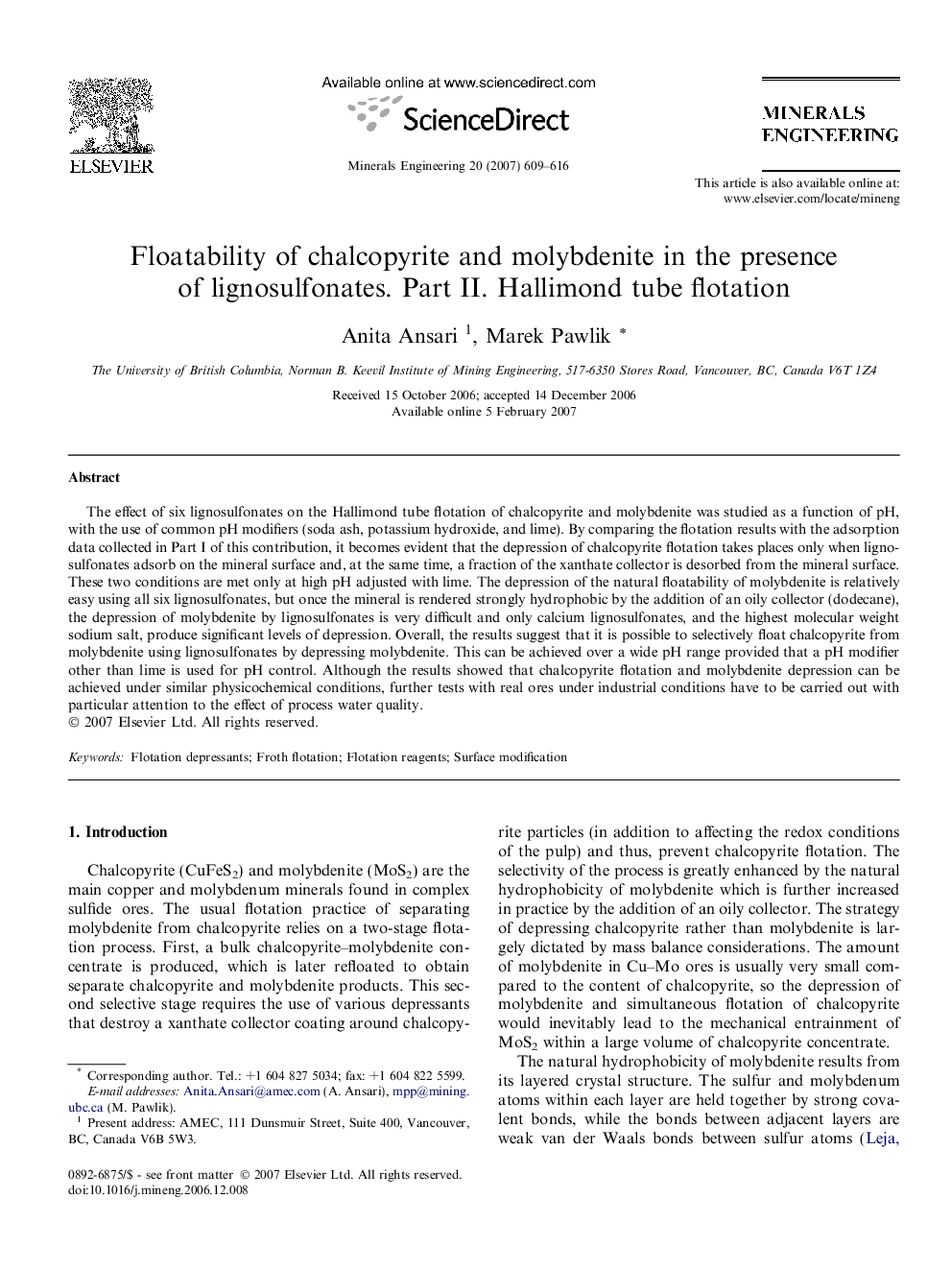| Article ID | Journal | Published Year | Pages | File Type |
|---|---|---|---|---|
| 234862 | Minerals Engineering | 2007 | 8 Pages |
The effect of six lignosulfonates on the Hallimond tube flotation of chalcopyrite and molybdenite was studied as a function of pH, with the use of common pH modifiers (soda ash, potassium hydroxide, and lime). By comparing the flotation results with the adsorption data collected in Part I of this contribution, it becomes evident that the depression of chalcopyrite flotation takes places only when lignosulfonates adsorb on the mineral surface and, at the same time, a fraction of the xanthate collector is desorbed from the mineral surface. These two conditions are met only at high pH adjusted with lime. The depression of the natural floatability of molybdenite is relatively easy using all six lignosulfonates, but once the mineral is rendered strongly hydrophobic by the addition of an oily collector (dodecane), the depression of molybdenite by lignosulfonates is very difficult and only calcium lignosulfonates, and the highest molecular weight sodium salt, produce significant levels of depression. Overall, the results suggest that it is possible to selectively float chalcopyrite from molybdenite using lignosulfonates by depressing molybdenite. This can be achieved over a wide pH range provided that a pH modifier other than lime is used for pH control. Although the results showed that chalcopyrite flotation and molybdenite depression can be achieved under similar physicochemical conditions, further tests with real ores under industrial conditions have to be carried out with particular attention to the effect of process water quality.
